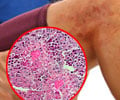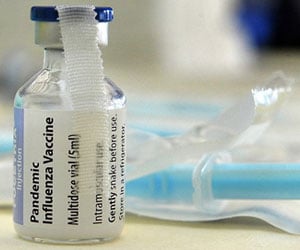
The role of these cells was uncovered after a persistent search by a team led by pathology professor Nicholas Lukacs, Ph.D., and Bryan Petersen, a student in U-M Medical School's Medical Scientist Training Program who recently completed a Ph.D. thesis based on these findings.
They found the cells while examining the role of a signaling molecule called interleukin 25, or IL-25 -- a type of protein called a cytokine that other asthma-probing scientists and pharmaceutical companies are also looking closely at.
The U-M team searched for cells that had a receptor on their surface capable of receiving IL-25's inflammation-promoting signal, and isolated a type of granulocyte that hadn't been observed before. They found that when these cells received IL-25 signals, they pumped out more inflammation-promoting cytokines called IL-4 and IL-13 that drive hallmarks of asthma such as mucus formation.
What's more, the cells could still do this in the presence of a steroid medication. And, the researchers showed they could essentially give steroid-resistant asthma to an animal that didn't have it or IL-25 receptors, by transferring the cells to their lungs.
They then partnered with U-M asthma and allergy specialist Alan Baptist, M.D., an assistant professor of internal medicine, to see if T2M-like cells could be found in humans.
Advertisement
Despite these results, Lukacs cautioned, "It's still too early to say that we could target these cells in humans. But because of the industry interest in IL-25 and its receptors, these results give that line of inquiry more fuel." Lukacs is also assistant dean for research at the U-M Medical School.
Advertisement
"While we've verified that this cell can be seen in people with asthma, we need to find out in a large group if it is more prominent in people with more severe, treatment-resistant forms of the disease – and even whether it could help define the characteristics of someone who will eventually develop that form of asthma," he says.
Meanwhile, the researchers will continue exploring IL-25's role, and the way different irritants cause the cells in the lung lining to release it. For instance, viruses that infect the lungs can cause the release of IL-25 – and such infections are also a known cause of asthma attacks.
Source-Eurekalert















